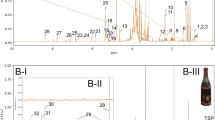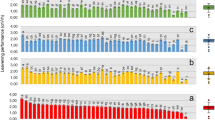Abstract
THE phenomenon known in Germany as “Blut im Brode,” and to us as bleeding bread, has appeared in this country, to no little dismay of the peaceful inhabitants. The subjects of this visitation are not only bread and biscuit, but also boiled potatoes, rice, and other farinaceous substances, on which red stains appear, which resemble blotches of blood. In former times, before their nature was known, these blood stains created much consternation amongst the superstitious as portents of calamity. The first modern naturalist who described it in scientific terms was Dr. Sette, of Venice, who recorded its appearance in Padua, in 1819, and gave it the name of Zoogalactina imetropha. In this instance it is stated that “a peasant of Liguara, near Padua, was terrified by the sight of blood stains scattered over some polenta, which had been made and shut up in a cupboard on the previous evening. Next day similar patches appeared on the bread, meat, and other articles of food in the same cupboard. It was naturally regarded as a miracle and warning from heaven, until the case had been submitted to a Paduan naturalist, who easily recognised the presence of a microscopic plant.”1 Subsequently Ehrenberg saw the same production near Berlin, in 1848, and, as usual with him under like circumstances, referred it to the animal kingdom, under the name of Monas prodigiosa; but during the same year it occurred in the experience of Dr. Camille Montagne, who saw it on cooked fowls and cauliflower, at Rouen, and it was regarded as an Algoid, under the name of Palmella prodigiosa. The first definite record of its occurrence in Britain appears to have been in 1853, when H. O. Stephens communicated an account of it to the Bristol Microscopical Society, and submitted specimens to the late Rev. M. J. Berkeley, who declared it to be identical with the organisms described by Ehrenberg and Montagne, but which he regarded as a fungus.
This is a preview of subscription content, access via your institution
Access options
Subscribe to this journal
Receive 51 print issues and online access
$199.00 per year
only $3.90 per issue
Buy this article
- Purchase on Springer Link
- Instant access to full article PDF
Prices may be subject to local taxes which are calculated during checkout
Similar content being viewed by others
References
Trouessart, "Microbes, &c." London, 1889, p. 126.
H. O. Stephens, on Palmella prodigiosa in Annals of Nat. Hist. vol. xii. December, 1853.
Pharmaceutical Journal, January 29, 1887, p. 610.
Dr. G. S. Woodhead, "Bacteria and their Products" (1891), p. 9.
Rights and permissions
About this article
Cite this article
COOKE, M. Bleeding Bread. Nature 48, 578–579 (1893). https://doi.org/10.1038/048578b0
Issue Date:
DOI: https://doi.org/10.1038/048578b0
Comments
By submitting a comment you agree to abide by our Terms and Community Guidelines. If you find something abusive or that does not comply with our terms or guidelines please flag it as inappropriate.



